Why practice pickleball drills at home?
Practicing pickleball drills at home offers numerous benefits that can significantly enhance your game. The convenience of having a practice space right in your home allows for consistent skill development, regardless of your schedule. This section outlines why honing your pickleball skills from the comfort of your home is not just practical but essential for your growth as a player.
No court? No problem!
In a world where court availability can be scarce, the ability to maintain your practice routine from home opens up a realm of possibilities. You don’t need access to a local pickleball court to improve your skills. Think of your living room, garage, or even your backyard as an arena where you can build your pickleball home practice routines. You might not have a net to serve over, but a wall can serve as your foe, allowing you to practice your colors without an opponent.
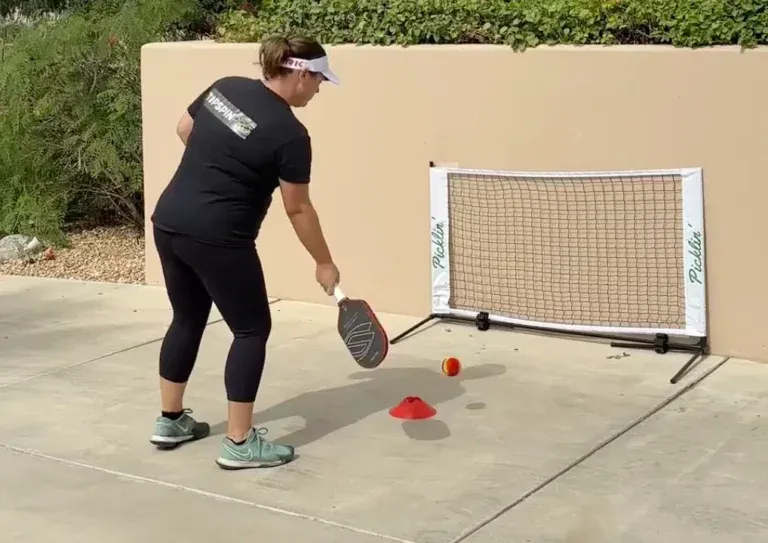
Just like a dancer who thrives in their own living room before hitting the grand stage, you can dance around your space, visualizing match scenarios while perfecting your shooting technique. This practice allows you to implement high-level strategies right at home, establishing a strong foundation for your future games.
Boost your skills faster
With tailored drills designed for pickleball improvement, your at-home practice can accelerate your learning curve. Beginners find it much easier to grasp the fundamentals of the sport when they can work at their own pace. Each repetition at home means enhanced muscle memory, a typical characteristic that blends with the art of play in pickleball.
You can take ownership of your practice and implement beginner pickleball tips to gradually increase the difficulty of your routines. By setting specific goals for each session whether it's improving your serves or mastering dinks you ensure a focused approach that paves the way for quick improvement.
Get fit and have fun!
Practicing at home also allows you to turn your workout routines into fun, pickleball-focused fitness sessions that help you stay active. You have the flexibility to mix your drills with cardio or strength training, creating a holistic training experience. Think of it like making a smoothie where each drill is an essential ingredient that contributes to your overall growth.
Engaging in pickleball fitness drills can help increase your agility, endurance, and reflexes, key elements in securing success on the pickleball court. Plus, let’s not forget that when you enjoy what you’re doing, you’re more likely to stick with it. Instead of feeling like a chore, practicing can transform into a delightful activity that you look forward to.
Gearing up for at-home pickleball drills
Before diving into the various drills available to practice at home, it’s essential to consider what equipment you’ll need and how to set up your practice space. Having the right tools and a conducive environment will facilitate better training sessions and ultimately translate to your performance on the court.
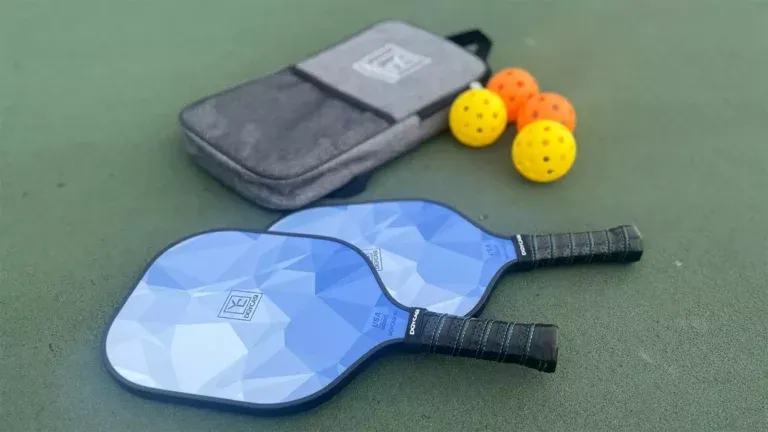
Essential equipment
To set yourself up for success, you’ll need a few fundamental items. A good-quality pickleball paddle is vital, and as a beginner, choosing the right one can make all the difference. Paddles come in various weights and materials, so finding one that feels comfortable and balanced in your hand is crucial.
In terms of pickleball balls, you must also differentiate between indoor and outdoor options. Indoor balls generally have more holes and are a bit lighter, while outdoor balls are heavier and more durable. Using the right type will help you acclimate to the conditions you'll face in actual games.
For an added layer of training, consider incorporating tools like the Dink Master Pro or Top Spin Pro to practice specific shots and improve your pickleball training skills. These aids can offer you advanced techniques to enhance your gameplay.
Setting up your practice space
Your pickleball practice area can be as simple as a marked spot in your backyard or a designated space in your living room. Utilize a wall to practice your serves and shots, creating a DIY pickleball court environment right at home. Ensure that you have sufficient space to execute various movement drills while avoiding obstacles that may disrupt your practice.
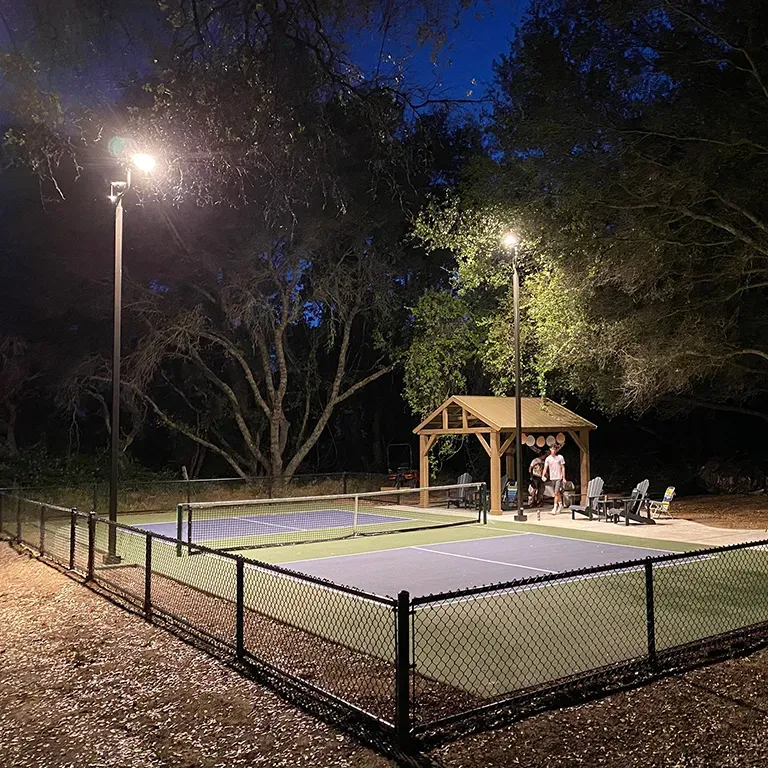
To target areas in your practice, consider using tape or chalk to create specific spots on the wall or ground. This simple marking system gives you visual cues to aim at while adding an element of competition to your practice.
Foundational drills: Mastering the basics
Every great athlete starts with the basics and pickleball is no exception. Establishing a strong foundation can result in improved performance and long-term success. In this section, we will focus on essential skills like grip, stance, and exploring hand-eye coordination drills all critical components for beginners to master.
Grip and stance fundamentals
One of the first things every beginner must understand is the importance of grip and stance. The continental grip is the gold standard among pickleball players. To achieve this grip, hold the paddle like you're shaking hands with it this promotes versatility in executing various shots.
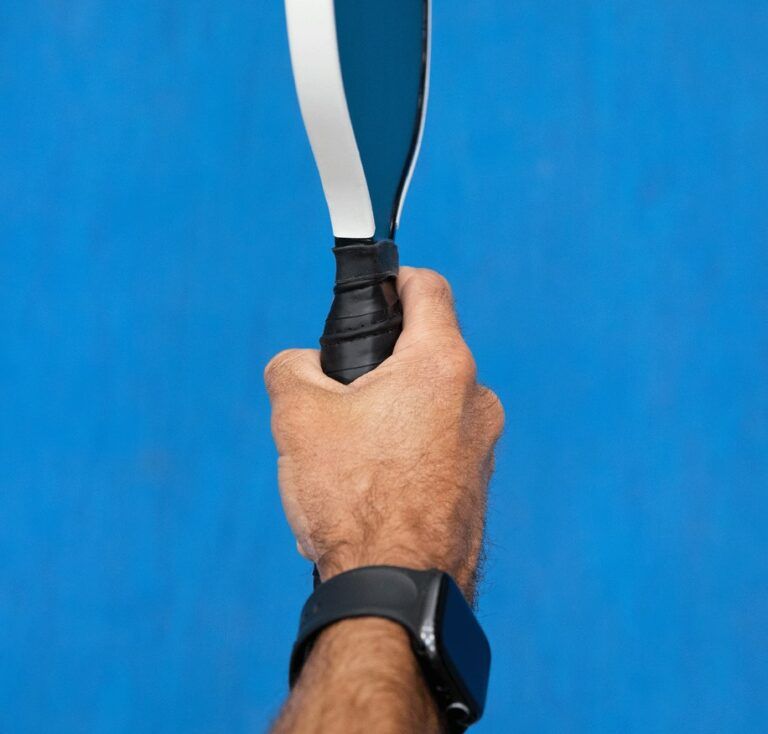
Equally important is your ready position. A balanced stance with knees slightly bent, feet shoulder-width apart, and paddle held in front can help you respond quickly to the ball. Techniques practiced in isolation, such as shifting your weight and maintaining a flexible posture, will pay off when faced with real-game scenarios.
Developing hand-eye coordination
Developing hand-eye coordination is pivotal when trying to control the trajectory of the ball. Start with simple paddle roll variations, alternating between forehand and backhand motions. Perform this drill while stationary, focusing on maintaining a relentless rhythm without dropping the ball.
You can also introduce challenges like catching the ball after a single bounce, refining your reflexes while fostering better control. Edge bounces, where you let the ball bounce on the edge of your paddle before making contact, are another exceptional way to work on your ball handling skills while having fun!
Building paddle control and touch
As you progress through your drills, cultivating paddle control and precision becomes crucial. This section will introduce dynamic drills that challenge your skills while promoting dexterity and finesse in your shots.
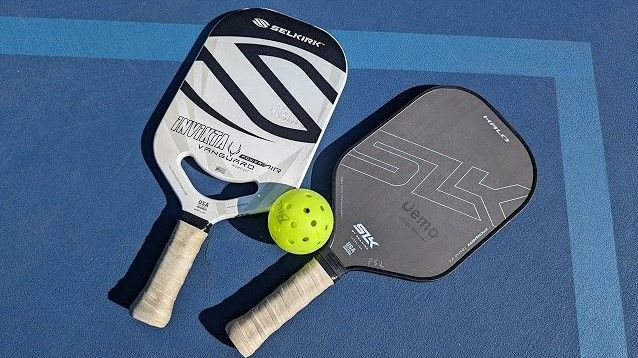
The around-the-world challenge
Imagine yourself navigating through your own mini pickleball universe. The around-the-world challenge puts a unique spin on traditional training. It requires you to practice swinging your paddle in various angles and directions. Think of each maneuver as a point on a circular map; you will learn to move fluidly as you build your muscle memory.
To master this skill, visualize a triangle with vertices representing your forehand, backhand, and overhead shots. Stitch the rotations together by transitioning smoothly from one point to another, mastering the rhythm of each stroke as you enhance your pickleball hand skills.
Paddle balance mastery
Achieving mastery in paddle control means maximizing its efficiency during gameplay. Engage in forehand-backhand drills where you alternate between the two, refining your touch with each stroke. Face-edge drilling allows you to test your precision by holding the paddle's edge while trying to strike the ball effectively.
A fun yet challenging drill is two-ball juggling, where you toss and catch two pickleballs simultaneously. This not only serves as a party trick but also builds remarkable coordination that translates well to the court.
The art of dinking: Soft touch and finesse
Dinking is a critical skill in pickleball, characterized by soft, controlled shots aimed just over the net. In this section, we explore effective ways to sharpen your dinking skills from home ensuring you’re ready to finesse your competition when it counts the most.
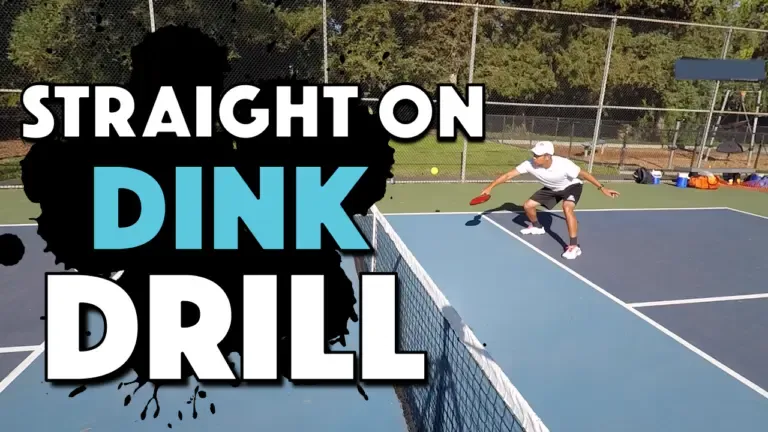
Dink like a pro (even without a court)
Dinking practice can be executed without a partner or a court, allowing you to focus on the nuances of this vital shot. Use drills such as self-volley, where you hit the ball back and forth with your paddle at a controlled level of power, building strength and finesse with each stroke.
Challenge yourself with target practice, where you set specific goals in your living space or backyard, aiming to land your dinks precisely where you want them. This adds an element of fun while ensuring a focused approach.
Another innovative drill is chair solitaire, where you visualize your perfect opponent sitting across from you and engage in dinking practice against an imaginary player.
Boosting your dinking reaction time
Practicing dinking isn’t just about making contact with the ball; it’s about developing rapid reaction time as well. Wall drills are great for this, allowing you to practice volleying and resets while honing your reflexes. Each hit against the wall translates to quick decision-making during actual matches.
Using visualization techniques can also enhance your practice. Picture a scenario where you need to react quickly, guiding your responses before even striking the ball. This mental conditioning will serve you well in real-game situations and improve your overall performance.
Adding power: Topspin techniques
Once you have the fundamentals down, adding power to your game becomes essential. Topspin can turn a standard hit into a formidable shot that complicates your opponent’s return efforts. This section dives into mastering topspin techniques and drills aimed at fortifying your power.
Understanding topspin: The why and how
Topspin creates a downward arc on the ball, making it both faster and more challenging for opponents to return. The mechanics behind it involves striking the ball with a low-to-high motion, invoking a swirling effect as it sails through the air.
Familiarizing yourself with these mechanics is critical. Pay attention to your stance, and ensure you're maintaining the correct gravitational pull as you prepare to generate that upward motion. When executed well, topspin is like casting a spell over the ball: it democratically decides its trajectory.
Drills for topspin mastery
To master topspin, utilizing tools like the Top Spin Pro can accelerate your learning. Design exercises that focus on generating upward motion when striking the dinks or drives, allowing you to experiment with varying angles and grips.
Simple wall drills can also have a profound effect. By hitting the ball against the wall while intentionally creating topspin, you can monitor your progress, practicing shot precision until it becomes second nature.
Pickleball footwork: Move like a champion
An often underestimated aspect of the game is the importance of footwork. Mastering footwork routines can spell the difference between victory and defeat, enabling players to position themselves more effectively during exchanges. Here’s how you can work on your footwork at home.
The importance of footwork in pickleball
Agility, balance, and speed are fundamental to executing successful plays. Picture a cat gracefully leaping between obstacles this is the level of finesse you want to achieve on the pickleball court. A strong foundation of footwork helps with maintaining court position and responding effectively to your opponent's shots.
Each step you take should be intentional, propelling you into position while ensuring that your balance remains intact. Engaging in drills focused on lateral movement and quickness can enhance your overall court presence.
Drills to enhance your footwork
Start incorporating footwork drills specifically designed to improve lateral movement, like the dink shuffle. This drill allows you to practice shuffling side-to-side while maintaining control over dinking shots. Even a simple lateral movement drill can help ensure that you remain balanced while responding to your rival’s returns.
Also, consider alternating sides while executing your dinks as you shuffle. This added complexity not only fine-tunes your movement but also challenges your ability to maintain control in dynamic situations.
Serving practice: Ace it from home!
The serve is often the most underappreciated yet crucial component of pickleball. A solid serve not only starts the game off right but also sets the tone for the play to follow. This section emphasizes how to perfect your serve technique at home.
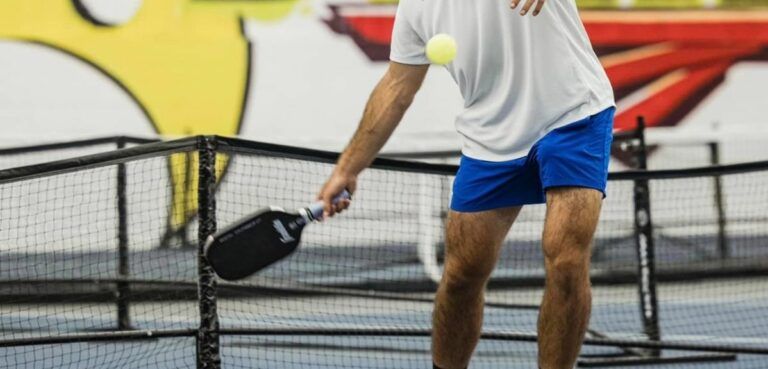
Perfecting your serve technique
Start with shadow serving exercises that build muscle memory. Utilize visual aids to simulate the net and mark your serving targets, allowing you to establish a consistent motion. Practicing your serving grip and motion repetitively will build confidence and technique.
Condition yourself to aim at specific targets, adjusting your shots to see how far off-target you may get. This exercise will improve your serve and sharpen your overall awareness of the court.
Advanced serve variations
Once you've mastered the basics, consider exploring advanced serve types, such as spin serves and drop serves. These variations add layers to your game and can create mismatches against opponents unprepared for these complexity variations.
Testing out your new skills can be accomplished with a friend or family member who can assist in offering feedback or simply serve as a target for you to aim at while practicing.
Mental game: Sharpen your pickleball IQ
Having the physical skills is paramount, but the mental aspects of the game can be just as critical. Understanding strategy and honing your focus can lead to breakthroughs in your performance. This section serves to enhance your cognitive skills related to pickleball.
Strategy and shot selection
Effective shot choices are like painting a masterpiece; each stroke must be carefully calculated to produce a winning outcome. Analyze match situations through film or live gameplay, focusing on the strategies employed by higher-level players.
Taking notes on tactical advantages can help you develop your own strategies, allowing you to play smart rather than solely relying on athleticism.
Developing focus and concentration
Assess the mental toughness you bring into the game. Mindfulness practices, including focused breathing and pre-game visualization techniques, can enhance your concentration while creating clarity as you prepare to compete.
Rituals such as listening to motivational podcasts or visualizing successful points will enhance your mental presence, ensuring that you remain focused through every moment of play.
Pickleball fitness: Train for peak performance
Training for pickleball involves more than just hitting the ball. To excel at the game, you must prioritize your overall fitness as well. Engaging in fitness routines that boost your agility, strength, and recovery will prepare you for the challenges on the court.
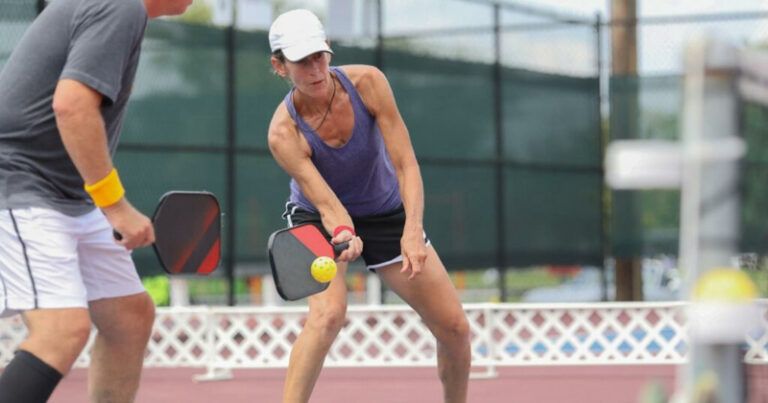
Why pickleball fitness matters
A strong physical foundation contributes to everything from endurance to injury prevention. Think of your body as a finely-tuned machine: when every part is in sync, you'll perform at your peak.
Incorporating agility, strength training, and flexibility exercises into your weekly routine creates a balanced approach to fitness, ensuring you’ll withstand the demands of the game.
Exercises to boost your game
Hands-on bodyweight exercises such as ladder drills, cone drills, and quick feet exercises can elevate your agility. Core strengthening exercises like planks and rotational presses are essential for enabling powerful strokes.
Don't overlook flexibility, as dynamic stretching and yoga for pickleball also become critical as you prepare for a challenging game. Training for flexibility will enhance your recovery, reduce the chance of injury, and contribute to overall performance longevity.
Fun pickleball games and challenges
Even while developing skills, adding an element of fun to your practice is essential. Keeping your practice enjoyable can enhance retention and motivation, ensuring you’ll stick to your goals.
Keeping it playful
Creating pickleball games centered around your skills can elevate your sessions from routine practice to engaging challenges. Consider personalizing your games to test your skills while having fun.
Challenge yourself!
Exploring creative pickleball challenges that can be completed in small spaces ensures you’re maximizing your practice sessions even in limited areas. For example:
- Paddle bump variations: Engage in forehand, backhand, and combo challenges.
- Selfie bounce: Test your control and footwork while engaging in a fun twist on traditional training.
These games transform your sessions into opportunities to drive engagement while developing skill sets that translate into proficiency on the court.
Conclusion: From home practice to pickleball success
In summary, the journey towards pickleball mastery begins right at home with the help of focused, enjoyable drills. From developing basic skills to enhancing your mental and physical proficiency, at-home practice offers you the tools you need to succeed. An unwavering commitment to pickleball progress, seasoned with countless hours of dedication, leads to eventual success.
Engage with the broader pickleball community to share your achievements and enthusiasm for the game. In doing so, you’ll further enrich your experience and motivation as you embark on your exciting pickleball journey. Remember, every great player once started where you are so keep practicing, refining your skills, and ultimately enjoy every moment of the game!










